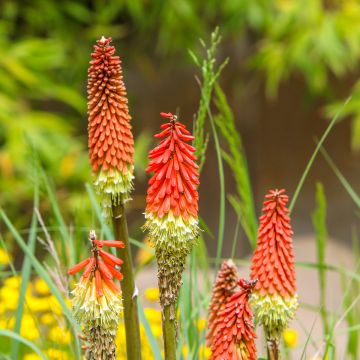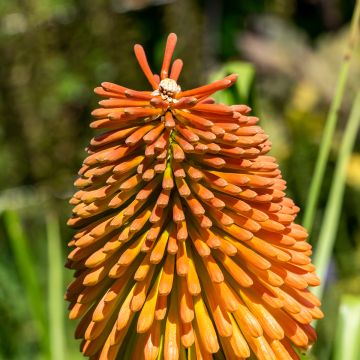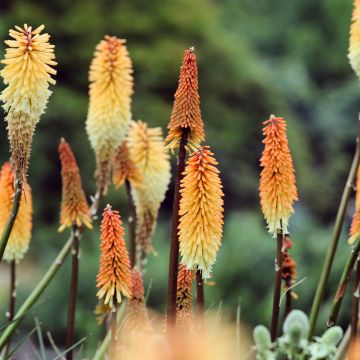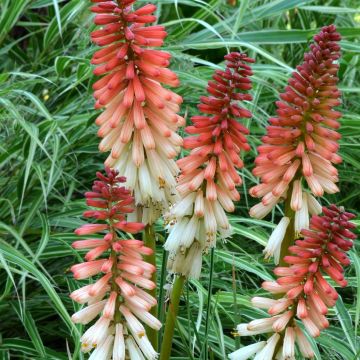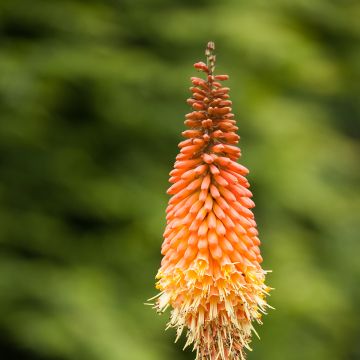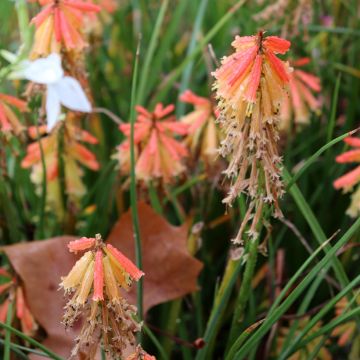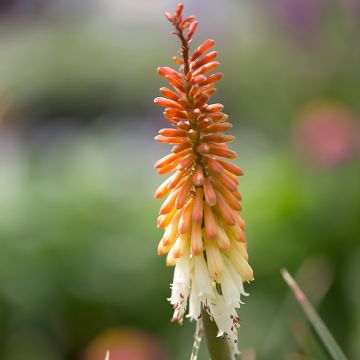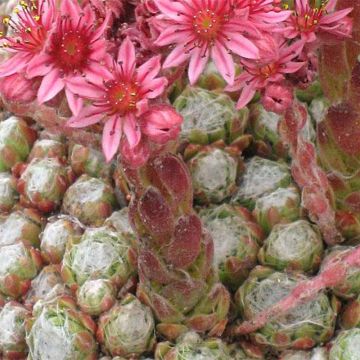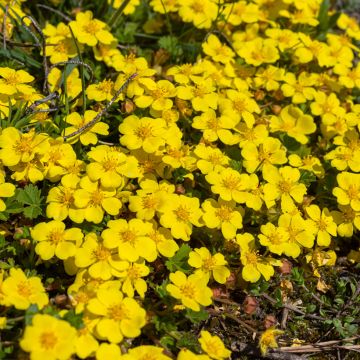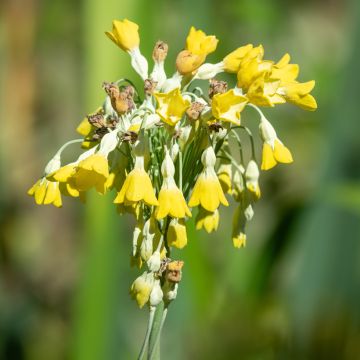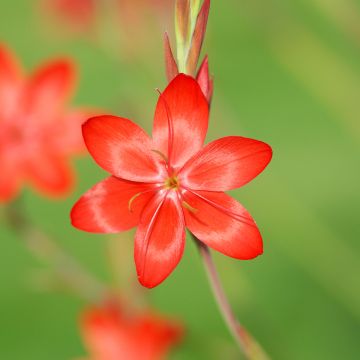

Kniphofia Green Jade - Red Hot Poker


Kniphofia Green Jade - Red Hot Poker


Kniphofia Green Jade - Red Hot Poker
Kniphofia Green Jade - Red Hot Poker
Kniphofia Green Jade
Red Hot Poker, Tritoma, Torch Lily, Poker Plant
Why not try an alternative variety in stock?
View all →This plant carries a 12 months recovery warranty
More information
We guarantee the quality of our plants for a full growing cycle, and will replace at our expense any plant that fails to recover under normal climatic and planting conditions.
From €5.90 for pickup delivery and €6.90 for home delivery
Express home delivery from €8.90.

Does this plant fit my garden?
Set up your Plantfit profile →
Description
Kniphofia 'Green Jade' is a large variety of tritoma that displays extravagant inflorescences in the shape of almost fluorescent torches, composed of cream-coloured flowers, opening in apple green speckled with orange at the top of the spike, then maturing into a cream to pale-yellow tone. It flowers from July to October. This robust perennial forms a generous clump of ribbon-like, arching leaves, reminiscent of miscanthus. It remains attractive all year round. This variety is sensitive to very harsh winters. It will thrive in full sun, in moist but well-drained fertile soil.
Kniphofia 'Green Jade' belongs to the Asphodelaceae family. This tall perennial is a hybrid obtained by cross-breeding various species native to South and East Africa. It is a plant with fleshy rhizomes. It presents flowers with an unusual colour, in a range of cream, yellow, and apple green. This plant forms an upright clump, with keeled, tough, and flat leaves, reaching 1 to 1.2m (3 to 4ft) in height and 60 to 80cm (24 to 32in) in width. The flowering occurs in summer and autumn, from July-August to October, rising well above the foliage, carried by bare stems. The honey-bearing and nectar-rich inflorescence is a dense terminal cluster of tubular and pendulous flowers, with a cream colour evolving towards acid-green, slightly tinged with orange when located in extreme positions, then becoming white-cream, from the bottom to the top of the spike. The foliage is evergreen, composed of very long, thick but thin leaves, gathered in a large spreading bunch.
Their exotic appearance already charmed our grandmothers. Tritomas are surprising plants, yet very sturdy. They light up any garden with their colourful torches. Combine Kniphofia 'Green Jade' with magenta red mallow, blue agapanthus, purple linarias, and Anchusa azurea 'Loddon Royalist', with deep blue flowers. Tritomas go well with lightly flowering perennials and structure beds just like tall grasses. They can be planted in isolation, on a lawn, along a path mixing colours, or with bamboo, yuccas, cannas, and lobelias to create an exotic atmosphere. They are also beautiful near water points, planted on a bank in well-drained soil.
Report an error about the product description
Kniphofia Green Jade - Red Hot Poker in pictures




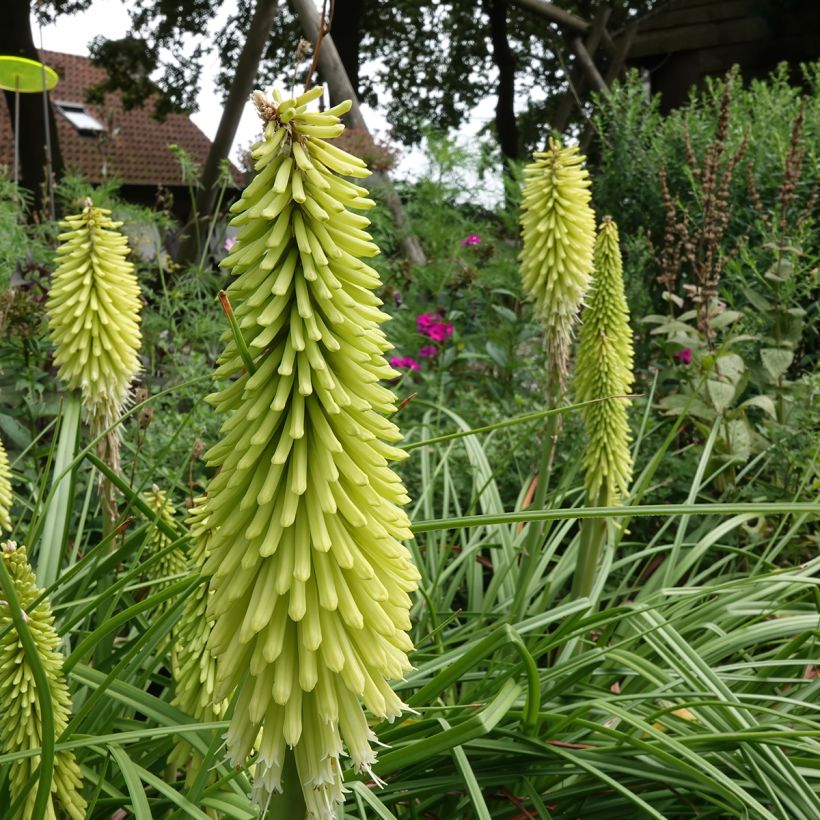

Flowering
Foliage
Plant habit
Botanical data
Kniphofia
Green Jade
Asphodelaceae
Red Hot Poker, Tritoma, Torch Lily, Poker Plant
Cultivar or hybrid
Other Kniphofia - Red-Hot Pokers
Planting and care
Plant Kniphofia 'Green Jade' in any ordinary, well-drained soil, in full sun. Make sure the plant does not lack water in summer, as this is when it needs it the most. This variety is hardy to -12 to -15°C (10.4 to 5°F). A thick mulch can be applied around the stump to protect it during particularly cold winters. This plant tolerates wind and the specific conditions of the seaside. Apply organic fertiliser at the start of the growing season. Remove faded stems and flowers at the end of autumn.
Planting period
Intended location
Care
-
, onOrder confirmed
Reply from on Promesse de fleurs
Summer flowering perennials
Haven't found what you were looking for?
Hardiness is the lowest winter temperature a plant can endure without suffering serious damage or even dying. However, hardiness is affected by location (a sheltered area, such as a patio), protection (winter cover) and soil type (hardiness is improved by well-drained soil).

Photo Sharing Terms & Conditions
In order to encourage gardeners to interact and share their experiences, Promesse de fleurs offers various media enabling content to be uploaded onto its Site - in particular via the ‘Photo sharing’ module.
The User agrees to refrain from:
- Posting any content that is illegal, prejudicial, insulting, racist, inciteful to hatred, revisionist, contrary to public decency, that infringes on privacy or on the privacy rights of third parties, in particular the publicity rights of persons and goods, intellectual property rights, or the right to privacy.
- Submitting content on behalf of a third party;
- Impersonate the identity of a third party and/or publish any personal information about a third party;
In general, the User undertakes to refrain from any unethical behaviour.
All Content (in particular text, comments, files, images, photos, videos, creative works, etc.), which may be subject to property or intellectual property rights, image or other private rights, shall remain the property of the User, subject to the limited rights granted by the terms of the licence granted by Promesse de fleurs as stated below. Users are at liberty to publish or not to publish such Content on the Site, notably via the ‘Photo Sharing’ facility, and accept that this Content shall be made public and freely accessible, notably on the Internet.
Users further acknowledge, undertake to have ,and guarantee that they hold all necessary rights and permissions to publish such material on the Site, in particular with regard to the legislation in force pertaining to any privacy, property, intellectual property, image, or contractual rights, or rights of any other nature. By publishing such Content on the Site, Users acknowledge accepting full liability as publishers of the Content within the meaning of the law, and grant Promesse de fleurs, free of charge, an inclusive, worldwide licence for the said Content for the entire duration of its publication, including all reproduction, representation, up/downloading, displaying, performing, transmission, and storage rights.
Users also grant permission for their name to be linked to the Content and accept that this link may not always be made available.
By engaging in posting material, Users consent to their Content becoming automatically accessible on the Internet, in particular on other sites and/or blogs and/or web pages of the Promesse de fleurs site, including in particular social pages and the Promesse de fleurs catalogue.
Users may secure the removal of entrusted content free of charge by issuing a simple request via our contact form.
The flowering period indicated on our website applies to countries and regions located in USDA zone 8 (France, the United Kingdom, Ireland, the Netherlands, etc.)
It will vary according to where you live:
- In zones 9 to 10 (Italy, Spain, Greece, etc.), flowering will occur about 2 to 4 weeks earlier.
- In zones 6 to 7 (Germany, Poland, Slovenia, and lower mountainous regions), flowering will be delayed by 2 to 3 weeks.
- In zone 5 (Central Europe, Scandinavia), blooming will be delayed by 3 to 5 weeks.
In temperate climates, pruning of spring-flowering shrubs (forsythia, spireas, etc.) should be done just after flowering.
Pruning of summer-flowering shrubs (Indian Lilac, Perovskia, etc.) can be done in winter or spring.
In cold regions as well as with frost-sensitive plants, avoid pruning too early when severe frosts may still occur.
The planting period indicated on our website applies to countries and regions located in USDA zone 8 (France, United Kingdom, Ireland, Netherlands).
It will vary according to where you live:
- In Mediterranean zones (Marseille, Madrid, Milan, etc.), autumn and winter are the best planting periods.
- In continental zones (Strasbourg, Munich, Vienna, etc.), delay planting by 2 to 3 weeks in spring and bring it forward by 2 to 4 weeks in autumn.
- In mountainous regions (the Alps, Pyrenees, Carpathians, etc.), it is best to plant in late spring (May-June) or late summer (August-September).
The harvesting period indicated on our website applies to countries and regions in USDA zone 8 (France, England, Ireland, the Netherlands).
In colder areas (Scandinavia, Poland, Austria...) fruit and vegetable harvests are likely to be delayed by 3-4 weeks.
In warmer areas (Italy, Spain, Greece, etc.), harvesting will probably take place earlier, depending on weather conditions.
The sowing periods indicated on our website apply to countries and regions within USDA Zone 8 (France, UK, Ireland, Netherlands).
In colder areas (Scandinavia, Poland, Austria...), delay any outdoor sowing by 3-4 weeks, or sow under glass.
In warmer climes (Italy, Spain, Greece, etc.), bring outdoor sowing forward by a few weeks.

































